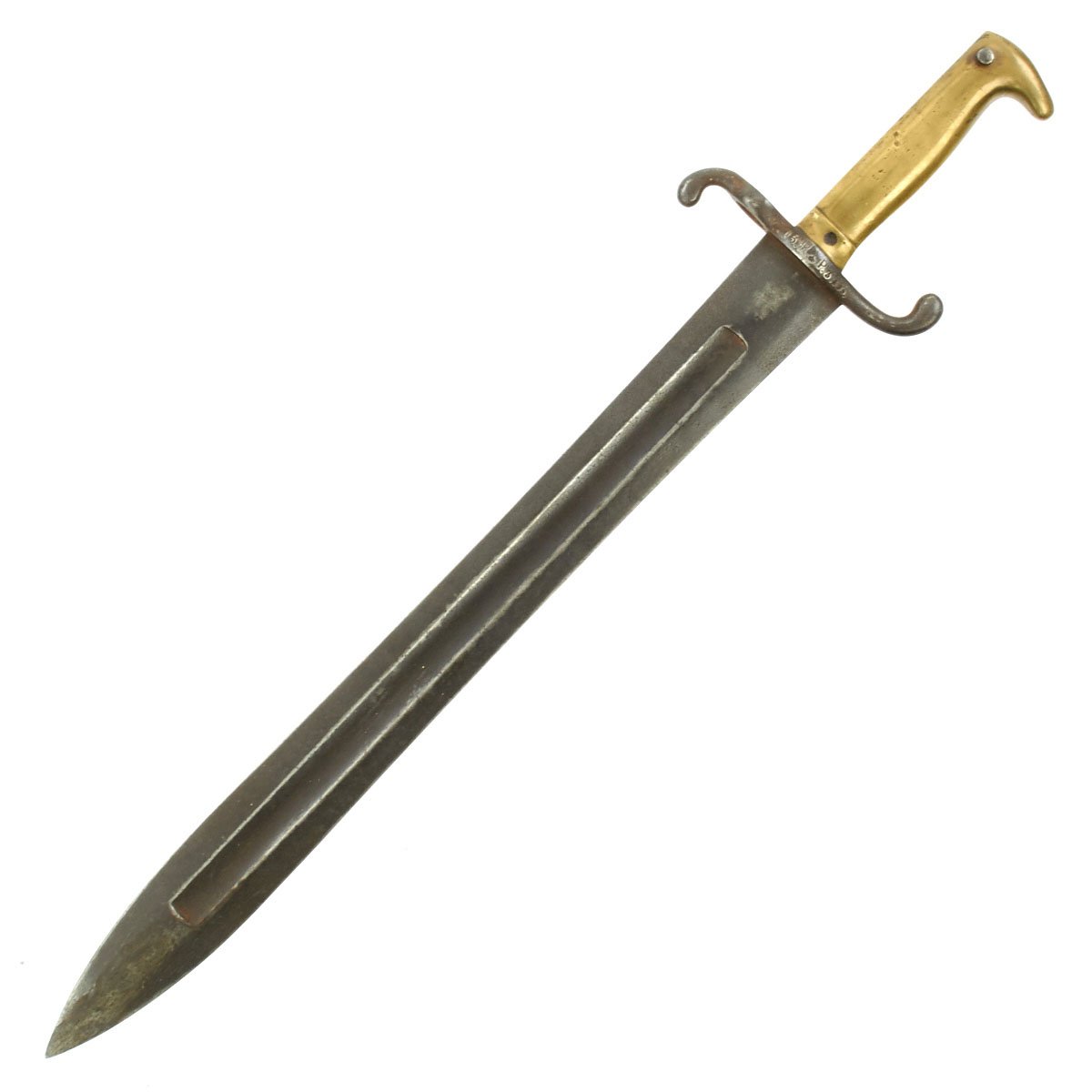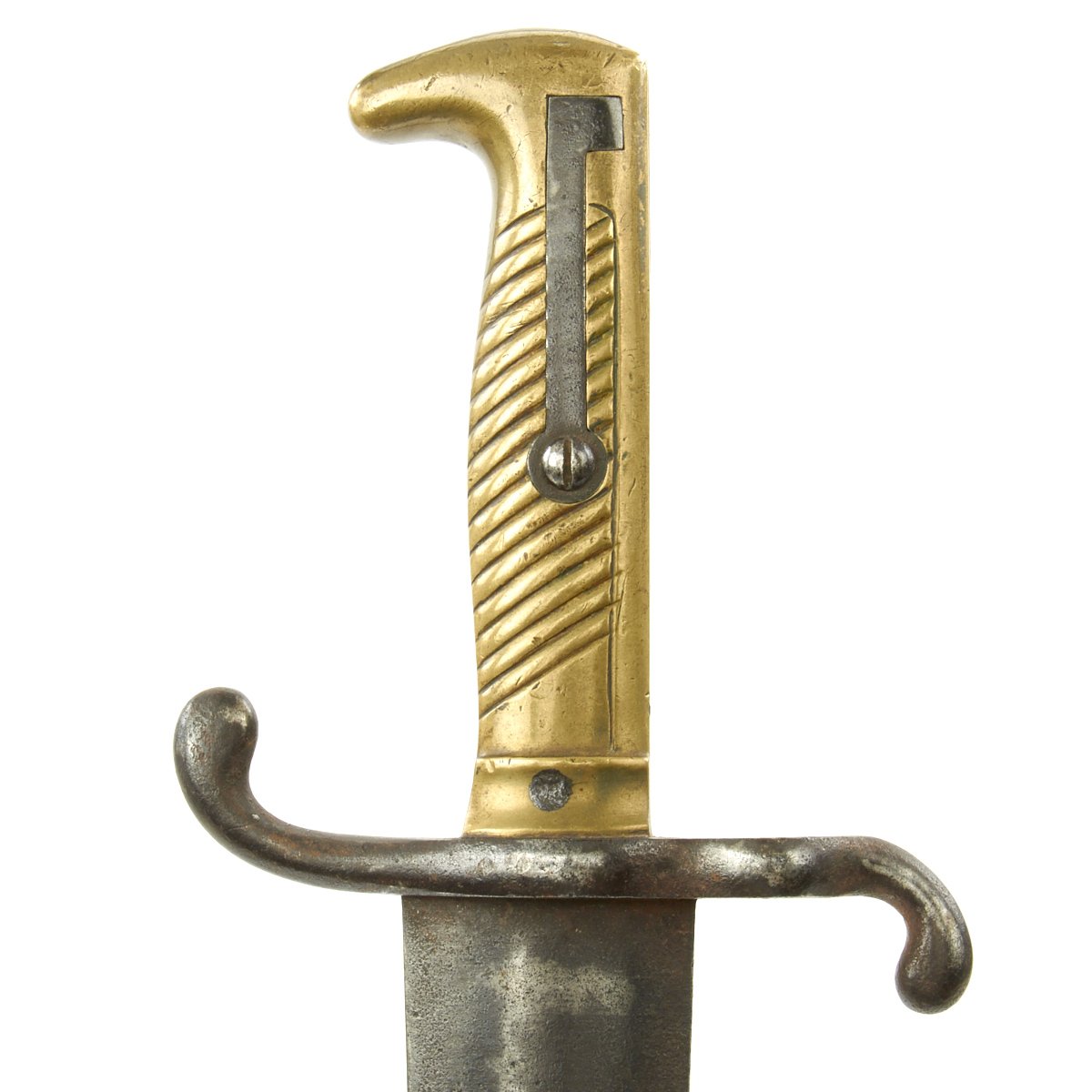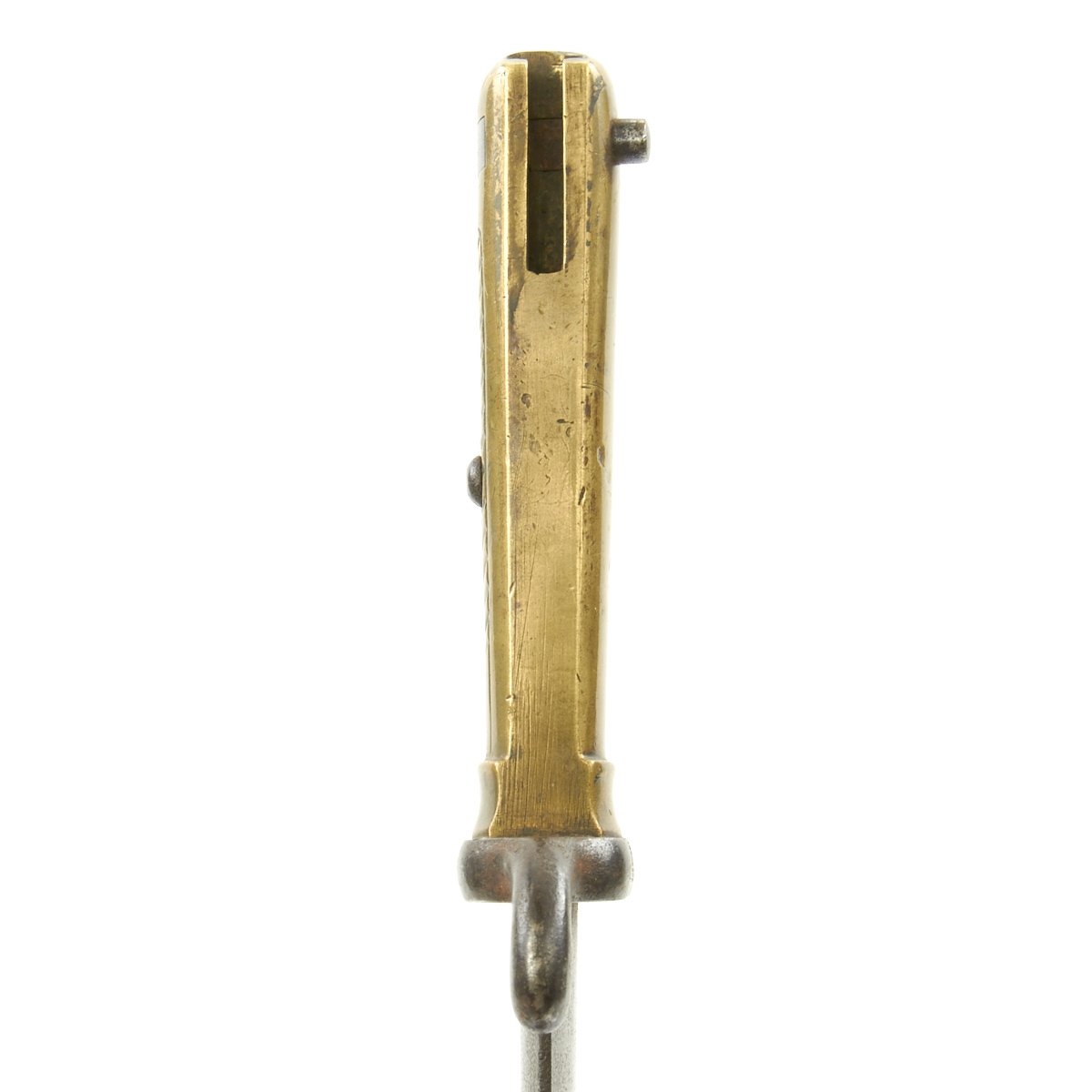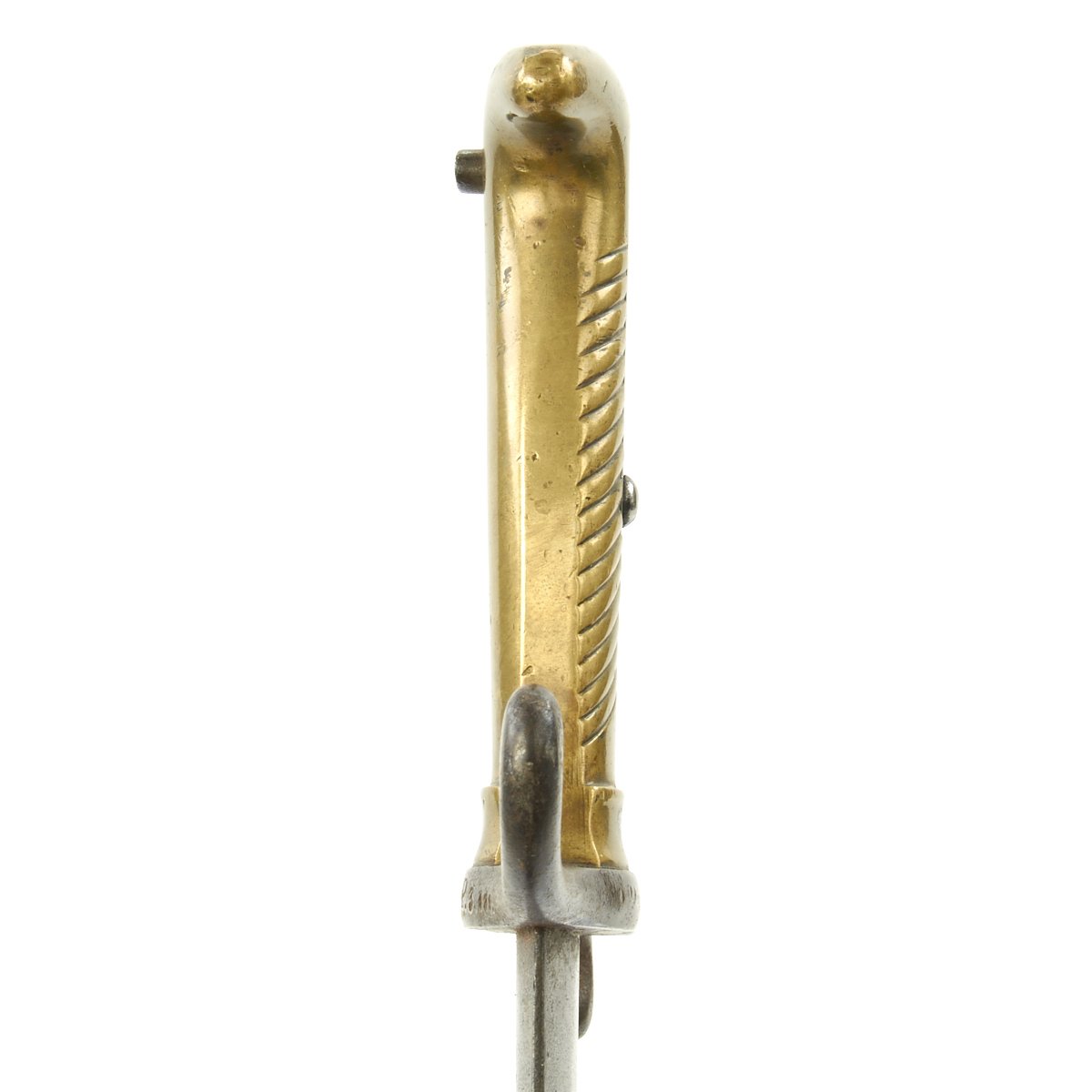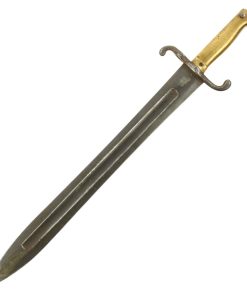Original German Model 1871 Württemberg Faschinenmesser Pioneer Bayonet – Regiment Marked Original Items
$ 1.995,00 $ 498,75
Original Item. Only One Available. This was always the hardest German Pioneer Bayonet to find and the only one not having a Sawback on the blade. The blade in fact came from the Artillery Faschinenmesser short Sword Model 1857. The bayonet has an all brass bird’s head shaped hilt, with a brass “S” cross guard. The name itself translates to “Fascine Knife”, and the design is intended both for defense an as a tool for cutting “fascines”. These are bundles of sticks and brush used to strengthen trenches, walking paths, and other types of earthen work found on the battlefield. They are the predecessor of the heavy sawback pioneer swords and bayonets used in WWI.
This Bayonet, measuring over 23″ in length, has a double edged 18″ blade, with a single large fuller on both sides. Our example is Maker marked GEBR. WEYERSBERG in an arc over SOLINGEN. This is the mark of the Legendary Gebrüder Weyersberg, Waffenfabrik, which from 1859 onward operated a factory on Hochstrasse in the Ohligs area of the City of Solingen. Called “The City of Blades”, Solingen is a world-renowned edged weapon area, with a history dating back to the middle ages. The Weyersberg family itself had a history of swordmaking going back at least 6 generations. The company had numerous contacts and customers in Europe, and supplied weapons to Napoleon’s army, as well as to the Prussian and Russian armies during the 19th century.
The sudden death of Hermann Weyersberg in 1883 caused a management issue, and the manufacturing portion of the company was amalgamated with W.R. Kirschbaum to form the well-known firm of Weyersberg, Kirschbaum & Co. As part of this agreement the sales and trading portion of Weyersberg continued under numerous brand names.
Aside from the wonderful historic maker, this bayonet also bears Regimental markings on the cross guard of 13. [R.] P. 3. 139.. The stylized “R” has been partly stamped out, which would indicate that this bayonet was issued to the 13th Reserve Pioneer Regiment, 3rd company, 139th man. This regiment then was called out of reserve, so the R was overstamped.
These bayonets were originally intended to be used with the Mauser 71 Infantry Rifle. In very good collector’s condition showing speckled very old rust stains and light oxidation the blade. A very nice rare example of the predecessor to many machetes and other pioneer blades, ready to display!
Fast Shipping with Professional Packaging
Thanks to our longstanding association with UPS FedEx DHL, and other major international carriers, we are able to provide a range of shipping options. Our warehouse staff is expertly trained and will wrap your products according to our exact and precise specifications. Prior to shipping, your goods will be thoroughly examined and securely secured. We ship to thousands clients each day across multiple countries. This shows how we're dedicated to be the largest retailer on the internet. Warehouses and distribution centres can be located throughout Europe as well as the USA.
Note: Orders with more than one item will be assigned a processing date depending on the item.
Before shipping before shipping, we'll conduct a thorough inspection of the items you have ordered. Today, the majority of orders will be delivered within 48 hours. The delivery time will be between 3-7 days.
Returns
The stock is dynamic and we cannot completely manage it because multiple stakeholders are involved, including our factory and warehouse. So the actual stock may alter at any time. It's possible that you may not receive your order once the order has been made.
Our policy is valid for a period of 30 days. If you don't receive the product within 30 days, we are not able to issue a refund or an exchange.
You can only return an item if it is unused and in the same state as the day you received it. You must have the item in its original packaging.
Related products
Uncategorized
Uncategorized
Uncategorized
Uncategorized
Uncategorized
Uncategorized
Uncategorized
Uncategorized
Uncategorized
Uncategorized
Uncategorized
Band of Brothers ORIGINAL GERMAN WWII Le. F.H. 18 10.5cm ARTILLERY PIECE Original Items
Uncategorized
Uncategorized
Uncategorized
Uncategorized
Uncategorized
Uncategorized
Australian WWII Owen MK1 Machine Carbine SMG Custom Fabricated Replica with Sling Original Items
Uncategorized
Uncategorized
